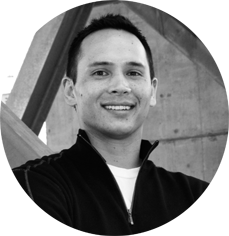IT Moneyball: A person who counts startups
- Transfer
Starting a business is dangerous ...
A big competitor can bring down prices. Someone may sue you for patent infringement. Others, because your product does not fulfill the promise. The market may not be at all interested in what you are selling. According to the US Bureau of Labor Statistics, about half of all businesses go bankrupt in the first five years.
 Thomas Thurston thinks that scientific evidence will help to avoid some risks. For the past nine years, he has honed the statistical methods for evaluating business plans and called them simulation business modeling. In some ways, the methods obtained are somewhat akin to Moneyball for investors.
Thomas Thurston thinks that scientific evidence will help to avoid some risks. For the past nine years, he has honed the statistical methods for evaluating business plans and called them simulation business modeling. In some ways, the methods obtained are somewhat akin to Moneyball for investors.According to him, the calculations correctly predicted the growth of Snapchat, Uber, and Airbnb. At the moment, calculations show a 66% probability that these companies will continue to operate over the next five years. He adds that the calculations predict the failure of almost any company in 88% of cases.
The simulation was so successful that Tom now uses it to earn money. He works for Growth Science , a research firm that sells its forecasts to large companies, and uses them for investment in partnership with the Ironstone Group venture capital fund . In the long run, according to the author of the methodology, models can have a rather strong impact on the business world as a whole, because they will help people avoid unnecessary investment decisions.
Tom acknowledges the imperfection of the model, but believes that a model that gives the correct result only in half the cases will already reduce the number of incorrect investment decisions that look like great opportunities for the inexperienced. If fewer companies fail, he argues, the entire economy will become more stable and will benefit everyone.
Tom Thurston is not alone in applying Moneyball-style scientific data to investments. Google Ventures uses a data-driven approach , like the Correlation Ventures and Venture Science funds.
Data-driven can be translated as an approach to management, where the main criterion for decision-making is the results of a measurable experiment.
He does not just use his calculations to make his own bets in the market. Growth Science assists large corporations in investing, conquering markets and strategies. 3M , for example, uses Growth Science services to predict the success rate of a new product and service. The basic idea is to help these companies make informed decisions and avoid the practice of mass layoffs. Tom believes that over time can also help small businesses and startups.
Banishing intuition
The idea of simulation business modeling came to the author in 2006, while working at Intel Capital, an investment division of a respected chip manufacturer. One day, he decided to analyze Intel's investment history to see any emerging patterns.
His approach is based on turning qualitative information, such as whether the company is the “initiator” or “fast follower” in the market, into quantitative data that gets clogged up in a table. This requires a certain degree of human assessment, the level of rigor or consistency.
“You can't trust a model until you remove all the intuitive variables from it ,” says Thomas.
Surprise, surprise ...
Using this process, he discovered some amazing things. The most amazing of them is that the team provides only about 12% of the success of the company. “You need a good team that will not have a devastating effect on the company, but hiring industry rock stars is not a big advantage,” he explains.
His work at Intel eventually brought him to the post of research fellow at Harvard University, thanks to Clayton Christensen, author of the disruptive innovation model . After that, to finance further research, he began working at Growth Science.
To the masses ...
Thomas Thurston wants to advise entrepreneurs - and help people with good ideas find better business models. Although so far his work has been mainly used by large companies and investors, he said that the results are leaking to small entrepreneurs.
Last year, the Ironstone Group invested in Arcimoto's electric car , but they were almost on the edge. When calculating the model, he finally decided that the company should go beyond the United States and enter emerging markets. For Arcimoto founder Mark Frohnmayer, this was key advice.
Problem!?
For companies that Tom rejected as unsuitable for investment, this will also be beneficial. “People will come back to us in a few months, and they will say:“ We thought about what you told us, and now we are doing something else. ”
He would like to help all the enterprises, and not just those that the Ironstone Group considers suitable in terms of investment. The problem is that Growth Science charges several thousand dollars for consulting the company. It is time-consuming to transform traditional business plans into a form suitable for the operation of the algorithm. For most companies at an early stage of development, this is still too much.
You can increase the availability of the method by automating most of the process by offering it as a web service - for a small monthly fee or even for free. In fact, Growth Science has already developed a beta service, but there is a catch.
According to Tom’s model, Growth Science’s own chance of survival, following the current business model, is about 69%. Adding an automated service will improve the chances, but there is a risk of the destruction of an already successful consulting business. In short, the real "innovator dilemma . " This situation clearly shows that there is always a fear of change, no matter how reliable your data models are.
